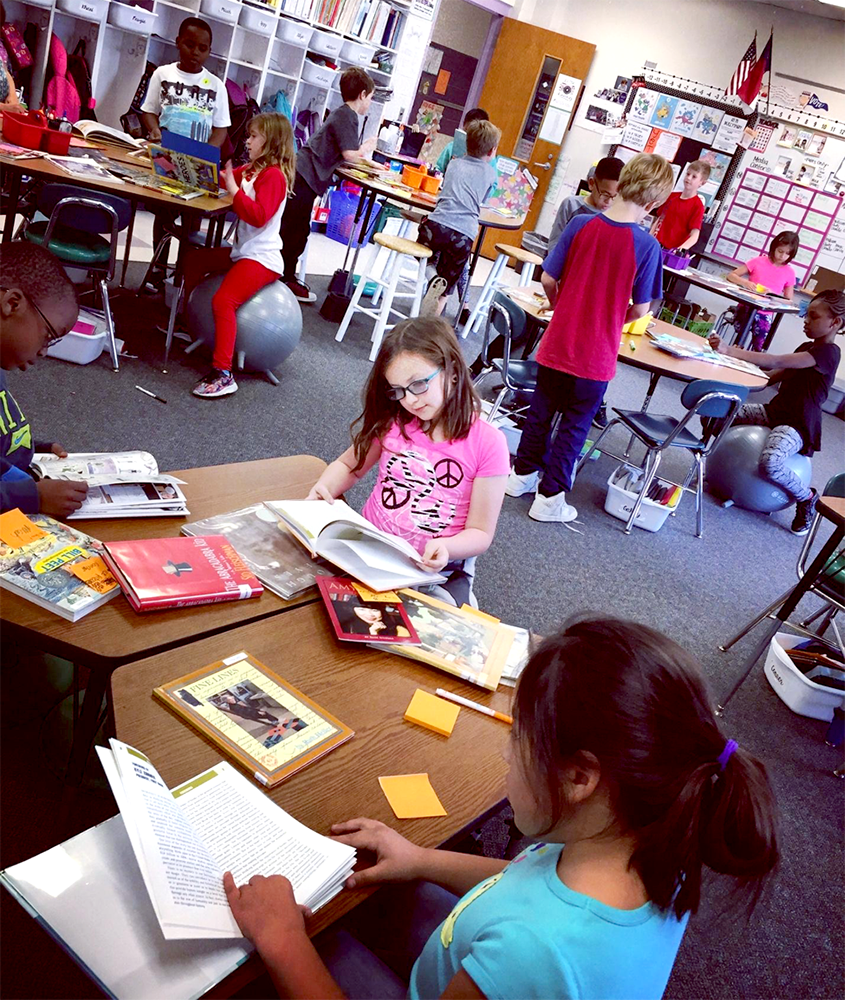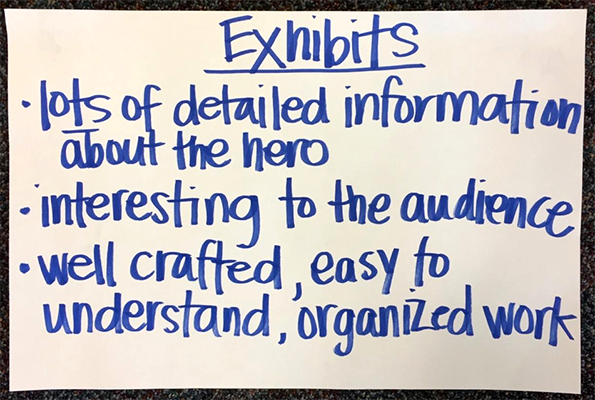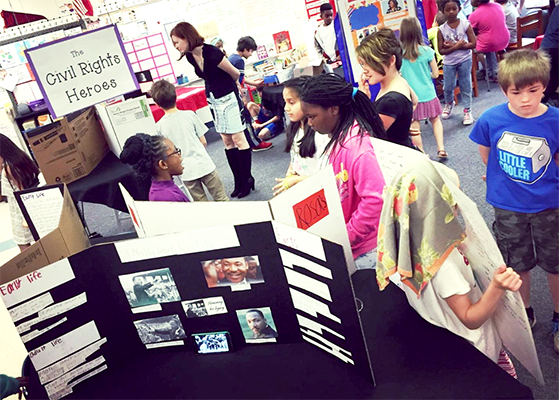
“Okay, I can see how all of this is great for older students, but how on Earth do I make PBL work with my younger ones?”
In my role as a PBLWorks National Faculty member, I hear this a lot from the elementary school teachers I work with. Involving students more in the process of their learning may sound great, but when that isn’t something you’ve had much experience with, it can feel a bit scary. I find that this is especially true when we are talking about Student Voice and Choice, one of Gold Standard PBL’s Essential Project Design Elements.
To help you better understand what this element might look like in the elementary grades, I’ll use a project that my third grade students engaged in as an example.
Our “Heroes Project” focused on the driving question, “How can we, as junior historians, celebrate the heroes who have impacted our world?” Students worked together to come up with a definition of “hero” and then chose someone they viewed as a hero to learn more about. We ultimately transformed our classroom into a Heroes Museum and each student presented information about their hero in an exhibit.
Throughout the project, I offered a number of opportunities for students to help make decisions.
Opportunity #1: What hero do you want to learn more about?
This is an easy one and something you probably already do. Because having too many choices can be overwhelming, I front loaded with some suggestions. As part of our entry event, I laid out a whole bunch of biographies that covered a variety of categories. I wanted to make sure that the things my students were interested in were represented somewhere in that collection of books. Students were given a little time at each table to review the books and then made a list of three people they’d like to learn more about.

Opportunity #2: What information is important to share with our audience?
To model the research aspect of this project, we read biographies together and talked about the important facts shared in the text. I could have easily provided them with a list of information to collect about their hero, but this provided us with a great opportunity to decide together. You can always offer hints or suggestions if they leave out something important, but I think you’ll see that they have a pretty good idea of what needs to be included without you telling them.
Opportunity #3: What can I create for my museum exhibit?
As my grade level team and I were planning the project, we searched Pinterest for hero project ideas and created a board with samples of student work. When it was time to talk with the students about how they would present their information in an exhibit, I pulled up the board and showed the photos to them. This offered my students an idea of what they could create and generated a LOT of excitement.
We made a list of things they liked from the photos and added ideas they came up with on their own. It was a pretty big list, so we revisited it the next day and agreed to eliminate any that we thought might take too long to create or require supplies that we didn’t have access to.
I was open to them creating just about anything, but if you are uncomfortable giving students free rein here, there’s no reason you can’t limit the number of exhibits. Agreeing on 3-4 different options from that original brainstorm still offers them choice and can keep you from going crazy.
Opportunity #4: What must my exhibit include?
No matter what kind of exhibit each student chose to create, we decided that every exhibit should have some of the same things. We set that criteria together by making a list of three reasonable expectations.

During the creation of the exhibits, students used this list to check their own work and give feedback to each other. Again, I could have decided this for them, but they were very capable of determining this as a group.
An important side note here is that every student was required to write a multiple paragraph biography about their hero. I used that to give each of them a grade for informational writing and reading comprehension of informational text. The exhibit was used to highlight some interesting things about the person, but was not graded for the report card, per se.
Opportunity #5: How will my exhibit be assessed?
Because I had already graded each student on their written report, the exhibits offered a great opportunity for students to reflect on and assess their own work. As we wrapped up the project, students filled out a Project Reflection and Self-Assessment sheet and were able to grade themselves beside the grade I gave them on their report.

Hopefully you can see through these examples that letting students completely take over the classroom isn’t what we mean when calling for Student Voice and Choice in PBL.
They don’t have to have control over ALL of the choices but offering them purposeful options and allowing them to help make decisions throughout the project goes a long way toward creating buy-in and increasing their motivation. Though our younger students may not have the same level of independence of middle or high school students, that doesn’t mean they can’t take a very active role within the project.

